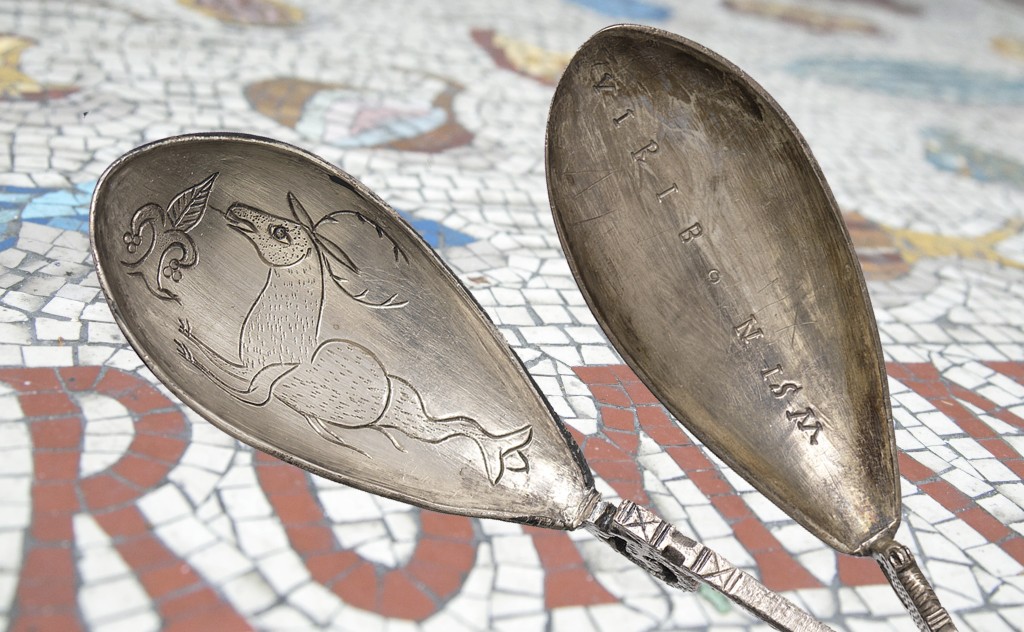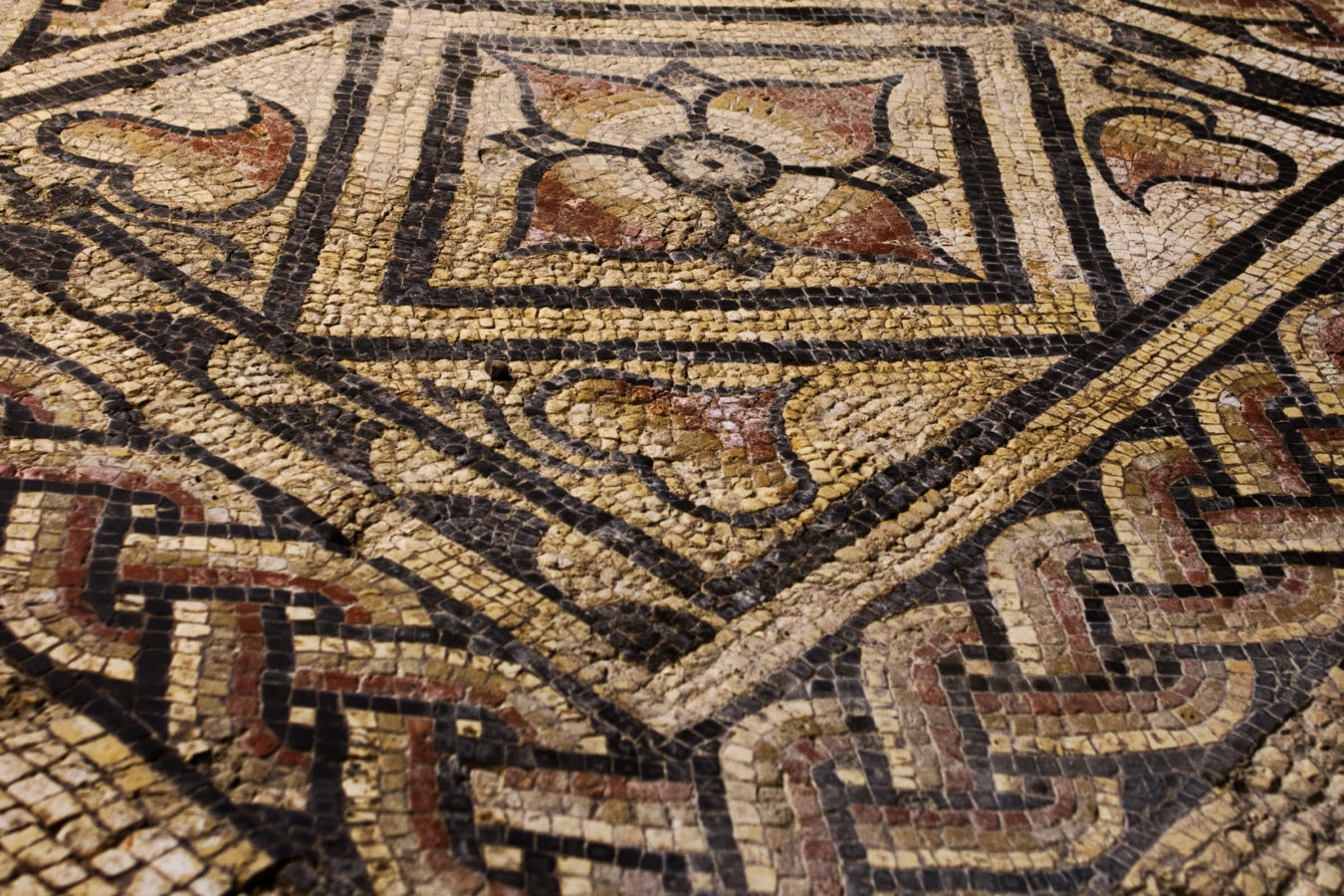
Silverware
When the garrison was withdrawn, Roman Canterbury was no longer safe. Townspeople fled as...
Roman glass production developed from Hellenistic* traditions, initially concentrating on the production of intensely coloured cast glass vessels. However, during the 1st century AD the industry underwent rapid technical growth which saw the introduction of glass blowing and the dominance of colourless or ‘aqua’ glasses. By the end of the 1st century AD large scale manufacturing meant glass was readily available throughout the Roman world.
Roman glass objects have been recovered across the Roman Empire in domestic, industrial and funerary contexts. Primarily it was used for the production of vessels, although it has also been found in mosaics, windows, mirrors, jewellery and games.
To produce the glass, sand (silica) was melted to an extremely high temperature and the molten glass picked up on a long metal tube through which air was blown, inflating the glass like a balloon. The glass could be blown into a mould or shaped and decorated while soft.
For a regional museum, Canterbury Roman Museum has an exceptional collection of beautiful and unusual Roman glassware on display. Excavations in Canterbury and East Kent have produced a very wide range of Romano-British glass vessels and fragments, dating from the mid-first century AD to at least the end of the fourth century.
Some of the large greenish-blue vessels on display contain cremated bone fragments. This is because they were later reused as cinerary (funerary) urns. Other items such as small jugs, cups and bowls were also included in Roman burial goods.
The size and decoration on some of the pieces is outstanding – it is hard to believe such intricate items were produced some two thousand years ago, and even more amazingly, that they have survived today.

Did you know? To create different colours of glass the Romans would increase or decrease the level of oxygen in the furnace. Other colours could also be achieved by adding small amounts of metal to the mix; adding copper produced blue, green, and red, manganese produced pink and red, cobalt a deep blue, calcium white, and lead brought out a yellow tint.
*The Hellenistic period covers the period of ancient Greek (Hellenic) and Mediterranean history between the death of Alexander the Great in 323 BC and the emergence of the Roman Empire as signified by the Battle of Actium in 31 BC
